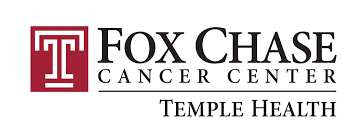Continuous advances in treatment for patients with relapsed or refractory multiple myeloma emphasize the need for patients and their doctors to work together during treatment decision-making.
Considering factors such as disease-free survival may be important for patients. However, quality of life and family circumstances should also be carefully thought out before treatment decisions are made, said Dr. Henry Fung during an interview with CURE®.
Fung is the chair of the Department of Bone Marrow Transplant and Cellular Therapies and director of the Multiple Myeloma Programs at Fox Chase Cancer Center in Philadelphia.
He recently sat down with CURE® to discuss available treatment options for patients with relapsed or refractory multiple myeloma, why collective treatment decisions are crucial and advice for patients, regardless of the status of their journey.
Glossary
Disease-free survival: time patients live without experiencing symptoms of cancer.
Relapsed: the cancer responded to treatment at first but returned.
Refractory: the cancer no longer responds to the given treatment.
CAR-T cell therapy: a cell-based gene therapy that uses lab-altered genes from a patient to help their T-cells (immune cells) to help destroy the cancer.
CURE®: For patients with relapsed or refractory multiple myeloma, what are some of the traditional treatments they may receive?
Fung: There are many treatment options for patients with relapsed or refractory multiple myeloma. Unfortunately, all patients will [experience] relapse with multiple myeloma. We still consider multiple myeloma an incurable disease, but it’s also not uncommon for patients to be disease-free or in remission beyond seven to eight years. We’ve had patients go beyond 15 years and are still disease-free, so maybe this is potentially curable, but we don’t have enough data to declare that yet.
The first treatment includes the anti-CD38 monoclonal antibody, which should be included in every single salvage regimen nowadays and also has recently become the standard of care for frontline treatment.
Then, we have three different immunomodulating agents: [Thalomid (thalidomide)], [Pomalyst (pomalidomide)] and [Revlimid (lenalidomide)].
The combination [of treatments] that we will use will depend on whether patients are refractory to the last treatment. Also, the toxicity profile [is important], and that will determine the treatment for patients.
Having said that, these [treatments] are also evolving very rapidly. Now we have two CAR-T cell therapies and three bispecific antibodies.
Do patients have a say in what treatment or treatment combination they receive for their relapsed or refractory multiple myeloma?
Yes, we always give them the option while we’re [deciding on treatment]. We need to get patients’ informed consent and [understand] what the goal of therapy is for each patient.
Then, based on our expertise, [we list] what is best for [the patient]. [We ask] what they think and the alternative options. The goal of therapy is different for everyone. There are patients who say, “I want to at least play nine-hole golf. Otherwise, I don’t want to live anymore.” So, everyone’s goals are different: family goals are different and patient goals are different.
[Factors are considered, such as] whether they need pain medication, whether it’s worth continuing treatment, if they can be disease-free, if it’s important to reach remission or if they can just live as long as possible.
READ MORE: KRd56 Versus KRd27 Shows Similar Effectiveness, Safety in R/R Multiple Myeloma
For CAR-T cell therapy, it’s a one-time treatment, and if it works well, patients can be disease-free for a few years or more than that. [Patients] may live for three years or five years, but in between, one can play 18-hole golf, and the other has to come to see us every week.
Some patients want potentially fewer side effects. The CAR-T cell therapy is more intensive and has more side effects. [Some patients might say,] “I don’t want to take the risk, I don’t want to do that. I love the nurses and doctors so much.” So, they’ll come to the office. So, there are many considerations.
What advice would you offer to patients with relapsed or refractory multiple myeloma?
I think it’s very important for patients with newly diagnosed multiple myeloma or [patients] at any [point] of disease progression should connect with a myeloma center for multiple myeloma. [These centers] have the expertise and support for them and [they can] work with their local doctors together in order to get the best treatment.
Everyone should have a second opinion. As we said there are many [treatment] options. It’s good that [patients may] respect and trust their doctor, but now there are many different treatment options to choose from. All patients deserve the best, not just to live. They all deserve the best treatment, not just to [have good] responses to or reach remission or make them live longer. Because there are different options, the goal of therapy should be discussed, [considering] what patients think is best for them, their family and their circumstances.
This transcription was edited for clarity and conciseness.
For more news on cancer updates, research, and education, don’t forget to subscribe to CURE®’s newsletters here.






